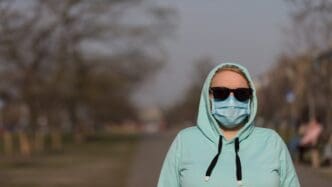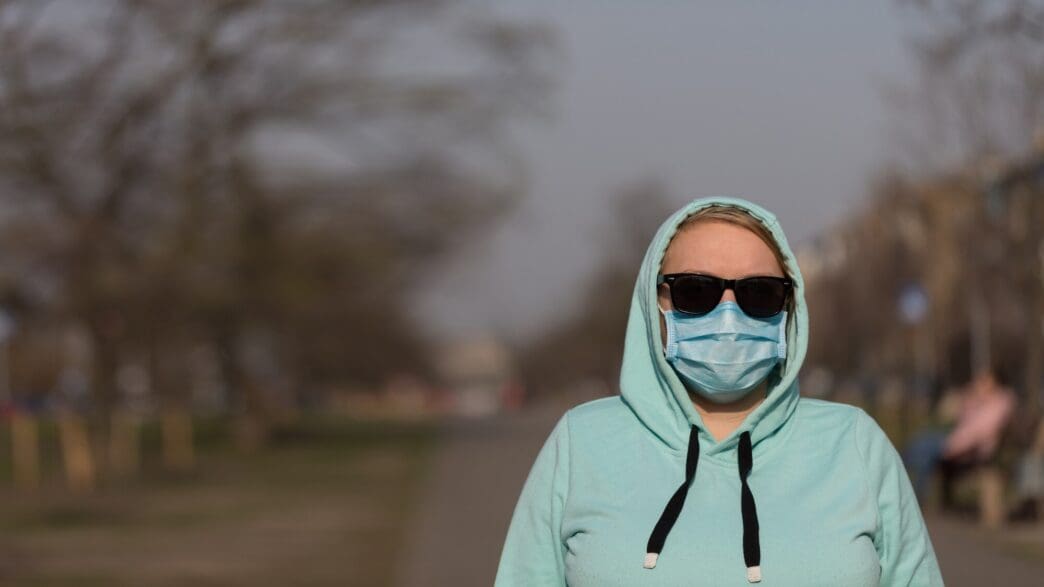A Quick Takeaway
The Story Behind the Trend
How to Make It Work for You
The Community View
For runners navigating the challenges of crisp winter air or urban environments with elevated particulate matter, a specialized running face mask can be a game-changer, offering protection and enhancing comfort. These masks are designed to filter out harmful pollutants like PM2.5 and PM10, while also warming the inhaled air to prevent respiratory discomfort and potential exercise-induced bronchoconstriction, allowing dedicated athletes to maintain their training regimen safely and effectively, regardless of external conditions.
Why Consider a Running Mask?
Running in cold weather can be harsh on the respiratory system. Cold, dry air can irritate airways, leading to coughing, wheezing, or even triggering asthma symptoms in susceptible individuals. A mask acts as a barrier, warming and humidifying the air before it reaches your lungs, making breathing significantly more comfortable.
Beyond temperature, air quality is a growing concern for outdoor athletes. Urban environments, industrial areas, and even rural regions impacted by wildfires can expose runners to microscopic particulate matter, volatile organic compounds, and other pollutants. Inhaling these substances during strenuous exercise, when breathing rates are high, can have detrimental effects on lung health and overall well-being.
Key Features to Look For
Selecting the right running mask involves balancing several critical factors to ensure both protection and performance. The ideal mask will offer effective filtration without unduly impeding your breathing or causing discomfort during high-intensity activity.
Filtration Efficacy
For pollution, look for masks that specify their filtration capabilities. Many high-quality running masks incorporate multi-layer designs, often including activated carbon filters to absorb gases and N95 or KN95 equivalent materials to trap fine particulate matter (PM2.5). Replaceable filters are a significant advantage, as their effectiveness diminishes over time.
Breathability and Ventilation
While filtration is important, breathability is paramount for athletic performance. Masks should allow for sufficient airflow to prevent a feeling of suffocation and to manage moisture build-up from sweat and breath. Some masks feature one-way exhalation valves, which can help expel warm, moist air more efficiently, reducing humidity inside the mask and preventing fogging of glasses, though these do not filter exhaled air.
Fit and Comfort
A mask is only effective if it fits well. Look for adjustable straps, a moldable nose bridge, and a design that creates a secure seal around your face without being overly restrictive. An improper fit can lead to air bypassing the filter or cause chafing and irritation, especially during long runs. Materials should be soft, hypoallergenic, and moisture-wicking to prevent skin issues.
Material and Maintenance
The fabric composition plays a role in both comfort and hygiene. Many running masks use breathable, moisture-wicking synthetic fabrics like polyester or nylon blends. Antimicrobial treatments can help reduce odor-causing bacteria. Ensure the mask is washable, and if it uses replaceable filters, confirm their availability and ease of changing.
Types of Running Masks
The market offers a variety of masks tailored to different primary needs, though some aim to be versatile.
Cold Weather Protection
These masks, often resembling balaclavas or neck gaiters, prioritize thermal insulation. They are typically made from fleece, wool, or thick synthetic fabrics designed to cover the mouth, nose, and often the entire face. While they warm the air, their filtration capabilities against fine particulate matter are usually minimal unless specifically designed with integrated filter pockets.
Pollution-Specific Masks
Designed primarily for air quality, these masks focus on advanced filtration. They often feature multiple filter layers, exhalation valves, and a more structured design to ensure a tight seal. While effective against pollutants, some models may feel less breathable or warmer for cold weather running compared to dedicated thermal options.
Hybrid Options
A growing category, hybrid masks attempt to bridge the gap by offering both thermal protection and decent filtration. These might combine a breathable, insulated fabric with a pocket for an activated carbon or PM2.5 filter insert. They offer a good compromise for runners facing both cold temperatures and moderate pollution levels.
Optimal Use and Care
To maximize the effectiveness and lifespan of your running mask, proper usage and maintenance are crucial. Always ensure the mask creates a good seal around your face; any gaps will allow unfiltered air to enter. For masks with replaceable filters, adhere to the manufacturer’s guidelines for how often to change them, as filter efficiency degrades with use and exposure to pollutants.
Regular washing of the fabric components is essential to maintain hygiene and prevent bacterial build-up. Follow care instructions carefully to avoid damaging filtration materials or the mask’s structure. If your mask becomes visibly dirty, torn, or if breathing through it becomes significantly harder due to clogged filters, it’s time for a replacement.
Breathe Easier on Every Run
Investing in a high-quality running face mask can significantly enhance your comfort and safety when training in cold conditions or areas with compromised air quality. By prioritizing filtration efficacy, breathability, and a secure fit, you can find a mask that supports your respiratory health, allowing you to focus on your performance and enjoy the benefits of outdoor exercise year-round. Always listen to your body and consider consulting a healthcare professional if you have pre-existing respiratory conditions before running in challenging environments.







